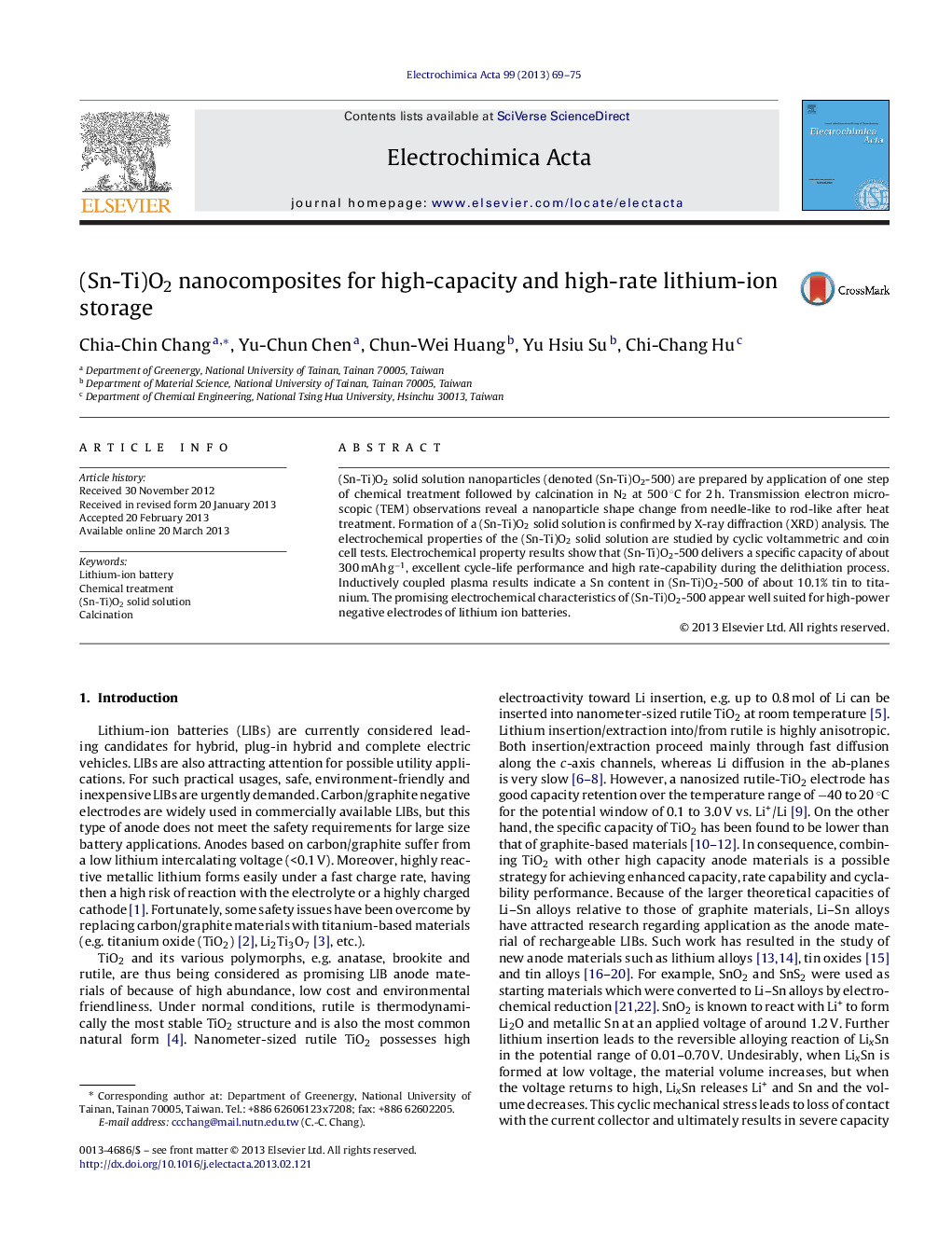| Article ID | Journal | Published Year | Pages | File Type |
|---|---|---|---|---|
| 187126 | Electrochimica Acta | 2013 | 7 Pages |
(Sn-Ti)O2 solid solution nanoparticles (denoted (Sn-Ti)O2-500) are prepared by application of one step of chemical treatment followed by calcination in N2 at 500 °C for 2 h. Transmission electron microscopic (TEM) observations reveal a nanoparticle shape change from needle-like to rod-like after heat treatment. Formation of a (Sn-Ti)O2 solid solution is confirmed by X-ray diffraction (XRD) analysis. The electrochemical properties of the (Sn-Ti)O2 solid solution are studied by cyclic voltammetric and coin cell tests. Electrochemical property results show that (Sn-Ti)O2-500 delivers a specific capacity of about 300 mAh g−1, excellent cycle-life performance and high rate-capability during the delithiation process. Inductively coupled plasma results indicate a Sn content in (Sn-Ti)O2-500 of about 10.1% tin to titanium. The promising electrochemical characteristics of (Sn-Ti)O2-500 appear well suited for high-power negative electrodes of lithium ion batteries.
Graphical abstractNano-(Sn-Ti)O2-coated TiO2 composite is prepared by the sequential application of chemical treatment and calcination through the N2 calcination step. TEM analysis shows that the shape of (Sn-Ti)O2 becomes granular and XRD results reveal the formation of a (Sn-Ti)O2 solid solution. A (Sn-Ti)O2 composite anode exhibits higher capacity, better cycliability, improved stability, and high-rate capability.Figure optionsDownload full-size imageDownload as PowerPoint slideHighlights► XRD confirms formation of (Sn-Ti)O2 solid solution via simple inexpensive process. ► TEM analysis shows the (Sn-Ti)O2 solid solution has rod-like shape. ► Nano-(Sn-Ti)O2 has high capacity, good rate capability and cyclability for LIB.
